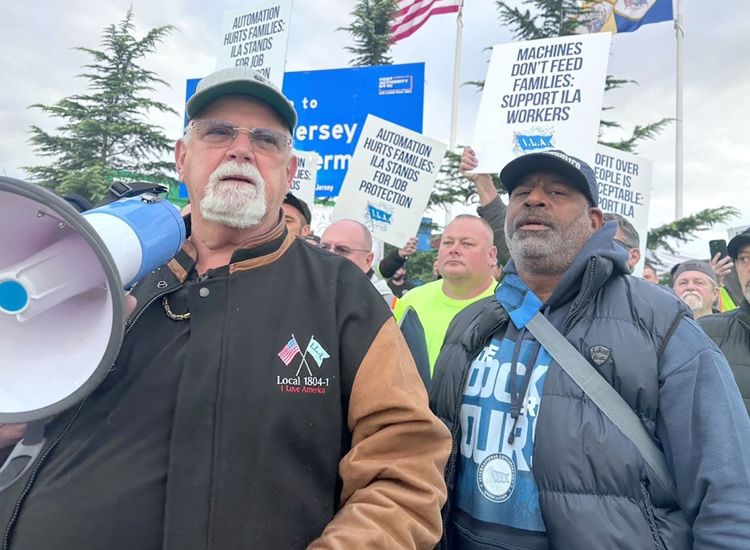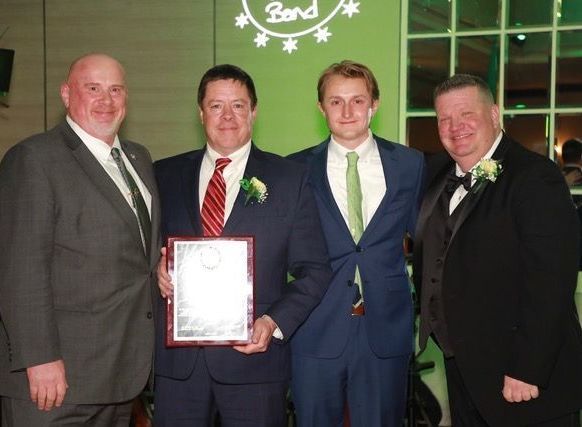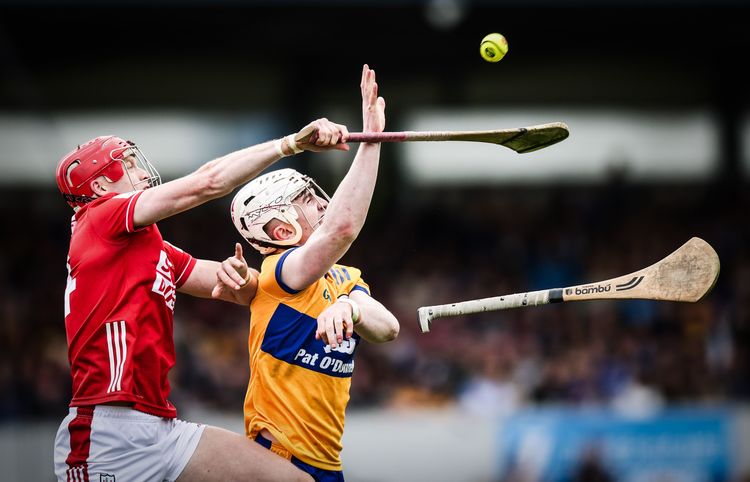Publicity on the side of a building in Lower Manhattan for "Tom Clancy's Jack Ryan," starring John Krasinski, who is of Irish and Polish descent. PHOTO BY PETER MCDERMOTT
By Peter McDermott
There is a joke conspiracy theory doing the rounds that suggests the Netflix documentary “Tiger King” was unleashed by the authorities to divert and calm the populace during our current crisis. So we asked some from our arts community what has diverted and calmed them these past couple of months, or to put it differently: what has the extra time at home allowed them to indulge in, culture-wise, and we also wanted to know how their own work is progressing. This is the first sampling.
Lucy McDiarmid’s most recent book is “At Home in the Revolution: what women said and did in 1916”; the native New Yorker is Marie Frazee-Baldassarre Professor of English at Montclair State University.
In our household we cover all levels: my partner Frank reads Hegel and Hannah Arendt for his on-line seminars but watches the Tom Clancy “Jack Ryan” series while he bikes in the living room. I’m writing an essay on Yeats and a book on recent Irish poetry, but I’m reading the very politically incorrect but totally absorbing “Royal Spyness" series, by the pseudonymous Rhys Bowen. Set in the 1930s, these books feature Lady Victoria Georgiana Charlotte Eugenie, daughter to the Duke of Atholt and Rannoch, 34th in line to the English throne, and her boyfriend, Irish peer Darcy O’Mara, as they solve murders and flirt but never go to bed together.

William Shakespeare.
Patricia Phelan is an editor, essayist and genealogist living in Freeport, N.Y.
A friend suggested we use the lockdown to learn or improve five things about ourselves. Not sure I’ve achieved five, but I’ve been trying to learn Spanish via Duolingo, as well as a cupla focal. I’m also using the time at home to read even more than usual. My favorite book has been “From a Clear Blue Sky: Surviving the Mountbatten Bomb” by Lord Mountbatten’s grandson Timothy Knatchbull, who was 14 when his twin brother was killed by the bomb and he himself was gravely injured. This story of physical and emotional recovery, which took many years, is told without an ounce of self-pity, making it a powerful memoir. Finally, I've been writing about my great-great-grandfather William Mansfield, who emigrated to New York from Kilgarvan, Co. Kerry, in 1836.

Tom Phelan, also of Freeport, is the author most recently of “We Were Rich and We Didn’t Know it: A Memoir of My Irish Boyhood.”
I’ve been reading James Shapiro’s “Shakespeare in a Divided America: What His Plays Tell Us about Our Past and Future.” Shapiro shows how popular Shakespeare’s plays were in this country, even among the “common” people; how the plays were used for political purposes; how they reflected social movements; how they were, sometimes daringly, used to present realities that had become hidebound in social and theological conservatism. Because Shapiro delves deeply into the particular plays he writes about, I decided to familiarize myself with them. So far I’ve read (or reread) “The Taming of the Shrew,” “Romeo and Juliet,” “The Tempest” and “Julius Caesar.” As for Netflix, I've been watching “The Twilight Zone.”

"The Twilight Zone" debuted in 1959.
John Spinks is an artist who was born in Ennis, Co. Clare, raised in Newcastle, England, and has long been resident in Brooklyn.
Restarted “Ulysses” a few weeks back. Excellent decision. Re-purchased “James Joyce’s ‘Ulysses’: A Guide by Stuart Gilbert,” also excellent. Having to comb my hair as it grows. Prior style — no maintenance at all. Been attempting self-portraits in pencil. Each one looks like a different bloke but that doesn’t bother me. Van Gogh’s own were that way too. Been cooking with greater imagination and frugality. Appreciating my cell mate [wife Andrea] more and more.
More next week.

Van Gogh portraits via John Spinks.









